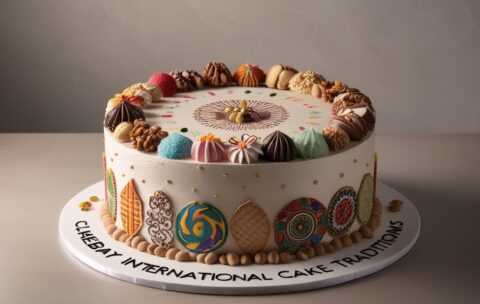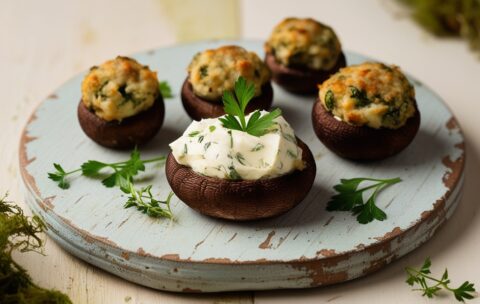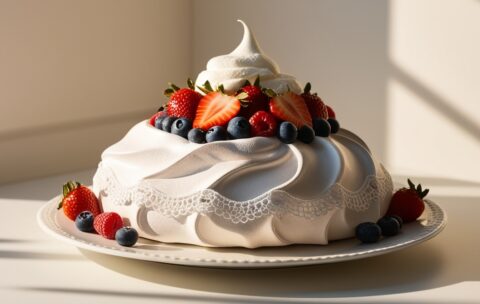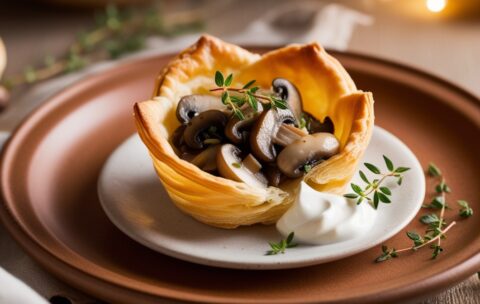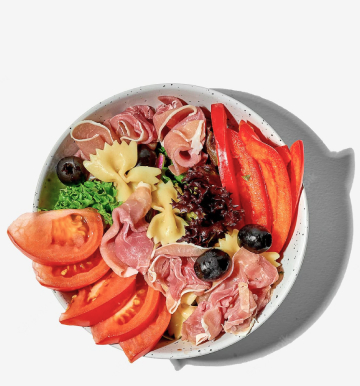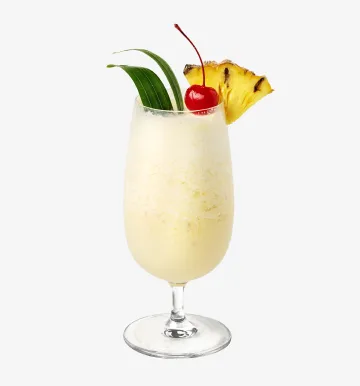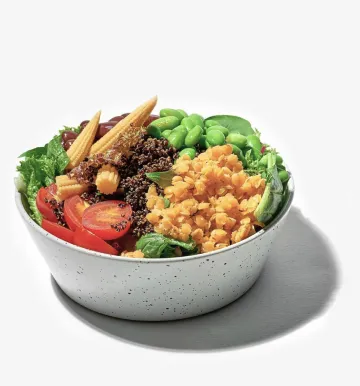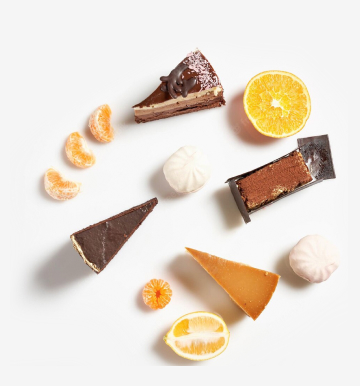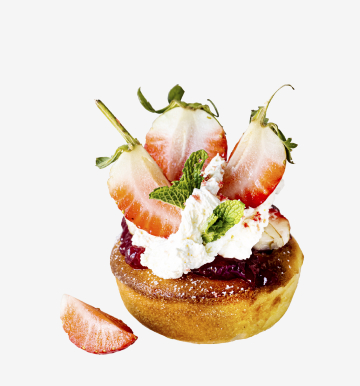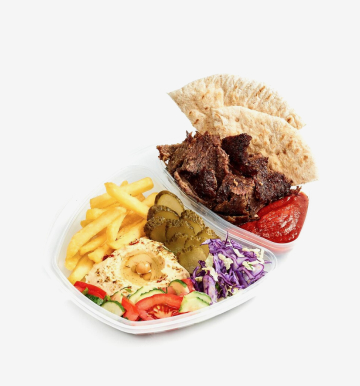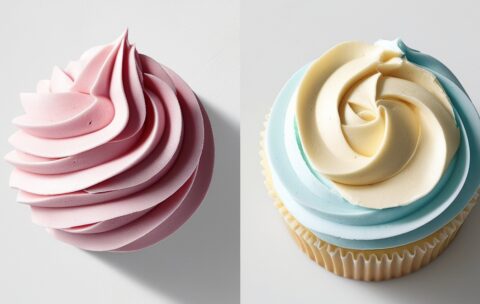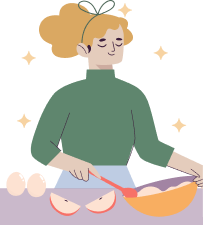Home Update 02
October 4, 2023 2025-06-05 13:04Home Update 02
Become a Home Chef
Learn to cook from scratch and master restaurant-quality meals in your own kitchen. Perfect for beginners and food lovers.

Our Top Courses
We've selected the best programs to get you started. Each course offers step-by-step lessons, hands-on recipes, and guaranteed results — even for beginners.
International Cake Traditions
5 Lessons
2.9 hours
Intermediate
What you'll learn
How to prepare and bake at least five signature cakes from different countries, using authentic ingredients and methods
The cultural and historical significance of each cake: when and why it’s traditionally served
Variations on flavorings and decorations that make each region’s version unique
Techniques for achieving proper texture, moisture, and flavor balance in international recipes
Tips for adapting ingredients when certain items are not readily available in your area
Presentation ideas to honor traditional styles (for example, Panettone’s distinctive domed shape or a Japanese wagashi’s intricate design)
Shrimp Scampi
4 Lessons
59 minutes
Intermediate
What you'll learn
How to select and properly devein shrimp for optimal texture and presentation.
Techniques for building a flavorful scampi sauce: sautéing garlic, deglazing with white wine, and adjusting lemon acidity.
Timing and heat control so shrimp cook through without becoming rubbery.
Methods for emulsifying butter into the sauce for a silky finish.
Pairing suggestions: choosing the right pasta, crusty bread, or vegetable accompaniment.
Plating tips to showcase the shrimp and sauce elegantly.
Vegetable Tart with Roasted Pepper and Goat Cheese
2 Lessons
2.2 hours
Intermediate
What you'll learn
How to roast bell peppers to achieve tender flesh and smoky flavor (peeling and deseeding techniques)
Techniques for caramelizing onions to bring out natural sweetness without burning
Preparing a Dijon crème fraîche base for balanced creaminess and tang
Layering vegetables and cheese to ensure even baking and flavor distribution
Baking tips to achieve a uniformly golden, flaky tart shell and prevent soggy bottom
Old Fashioned
7 Lessons
1.9 hour
Intermediate
What you'll learn
How to properly muddle a sugar cube (or measure simple syrup) with bitters to create the foundation of an Old Fashioned.
Differences between using bourbon versus rye whiskey: flavor profiles, proof considerations, and regional traditions.
Techniques for selecting and expressing citrus peel to maximize aromatic oils without adding bitterness.
Best practices for choosing ice (large cubes or spheres) to control dilution and maintain temperature.
Stirring methods that achieve a silky texture and proper dilution—timing, tool grip, and motion.
Variations on the classic recipe, such as adding a barspoon of water, swapping citrus types, or using flavored bitters.
Louis XIII Pure Gold Cocktail
4 Lessons
2.3 hours
Intermediate
What you'll learn
How to select and handle Louis XIII Cognac to preserve its intricate aromatic profile
Techniques for incorporating edible gold safely and attractively
Crafting a saffron-infused vermouth modifier that enhances, not overpowers, the cognac’s rancio
Proper stirring and dilution to maintain clarity while achieving silky texture
Choosing quality orange bitters and balancing their citric-spice character against the spirit base
Presentation tips: from glass choice to garnish placement for maximal visual impact
Serving temperature guidelines to showcase every nuance of ultra-aged cognac
French Gateau & Entremet Principles
2 Lessons
1.3 hour
Intermediate
What you'll learn
Fundamental Structures: How to build entremets layer by layer—choosing and baking the right sponge (génoise, Joconde, biscuit cuillère), creating thin croustillant layers, and assembling mousse and bavarois tiers for height and stability.
Texture & Temperature Management: Techniques to ensure each component sets properly (e.g., mousse firmness, gelatin bloom, glaze viscosity) and how to keep layers distinct without bleeding.
Flavor Profiling & Balance: Pairing fruit purées, chocolate, nuts, and creams to achieve harmonious taste profiles. Understanding acidity, sweetness, and how to cut richness with complementary elements (fruit inserts, crunchy praline).
Advanced Finishing Techniques: Preparing and applying a smooth mirror glaze, torching velour sprays, using transfer sheets, and piping delicate decorations. Learning how to achieve a polished, professional look every time.
Assembly & Troubleshooting: Best practices for unmolding, repositioning, and storing entremets. Identifying and correcting common issues—sogginess, collapsed layers, uneven glazes.
Presentation & Plating: Strategies for cutting perfectly even slices, garnishing with textures (tuile, cocoa nibs, spun sugar), and arranging plated portions so they look as good as they taste.
Coq au Vin
3 Lessons
2.3 hours
Intermediate
What you'll learn
Ingredient Selection & Preparation:
How to choose the right cut of chicken (whole, thighs, or a combination) and select complementary wine (e.g., Burgundy Pinot Noir or alternative regional varieties).
Proper techniques for trimming, seasoning, and preparing lardons, mushrooms, and root vegetables.
Braising Fundamentals:
The importance of searing chicken pieces for color and flavor development.
How to deglaze a Dutch oven or heavy-bottomed casserole with red wine, preserving all the fond (browned bits) on the pan bottom.
Flavor-Building Strategies:
Layering aromatics—onion, garlic, carrot, thyme, and bay leaf—to create depth.
Controlling heat and timing for a slow, gentle simmer that yields tender meat and a concentrated sauce.
Sauce Reduction & Finishing Touches:
Techniques for skimming excess fat and reducing the braising liquid to a velvety consistency.
Tips for adding mushrooms and optional garnishes (parsley, fresh herbs) at the final stage for maximum aroma and texture.
Plating & Serving Suggestions:
How to present Coq au Vin with traditional accompaniments (e.g., buttered noodles, mashed potatoes, crusty bread).
Strategies for reheating or holding the dish without sacrificing quality, making it ideal for dinner parties.
Stuffed Mushrooms with Herb Cream Cheese
2 Lessons
50 minutes
Intermediate
What you'll learn
How to select and clean the right variety of mushrooms for stuffing (e.g., cremini or button).
Techniques for preparing a smooth, flavorful herb cream cheese filling (including chopping herbs and incorporating garlic).
Properly hollowing and seasoning mushroom caps to maximize flavor absorption.
Baking methods to achieve a golden top and tender mushroom texture without overcooking.
Garnishing tips to add color and contrast (e.g., fresh parsley, red pepper flakes).
Storing and reheating strategies to maintain freshness when making ahead.
Pavlova
4 Lessons
3.3 hours
Intermediate
What you'll learn
Meringue Fundamentals (Paragraph + List):
You’ll understand how to whip egg whites to the correct stiffness and fold in sugar without deflating the mixture.
Recognize stages of beaten egg whites (soft peaks → stiff peaks).
Techniques for incorporating sugar gradually.
Identifying when the meringue mixture is ready for baking.
**Shaping & Baking Techniques (Table):
Step Key Tip
Piping vs. Spreading Use a piping bag for defined edges; spread with a spatula for a rustic look.
Forming a Well Create a shallow indentation in the center to hold cream and fruit.
Oven Temperature Start at 120 °C (250 °F) for 15 min, then reduce to 90 °C (200 °F) to dry.
This table highlights how small adjustments in technique and temperature impact the final texture.
Cream & Fruit Assembly (Paragraph):
Learn to prepare stabilized whipped cream so it holds shape, and choose complementary fruits (e.g., kiwi, berries, passion fruit) to balance sweetness and acidity.
Mushroom Vol-au-Vent with Sour Cream and Thyme
3 Lessons
1 hour
Intermediate
What you'll learn
How to select and prep a mix of wild mushrooms for maximum flavor (cleaning, slicing)
Techniques for sautéing mushrooms to develop deep, caramelized notes without becoming soggy
Crafting a silky, sour cream–based mushroom sauce (balancing acidity and creaminess)
Proper assembly of homemade or store-bought puff pastry shells to maintain crispness
Finishing touches: infusing fresh thyme, seasoning, and plating for an attractive presentation
Choose Your Category
Our courses are grouped by category to help you find what suits your taste. From quick dinners to gourmet desserts — start with what inspires you.



About Our Culinary Journey
We are passionate about bringing the joy of cooking to everyone. Our mission is to empower food lovers with the skills and confidence to create delicious meals at home. With expert chefs, innovative teaching methods, and a love for culinary arts, we’re here to inspire your kitchen adventures.
Our Commitment
Everyone can cook well. Our courses offer clear guidance to ensure success for all skill levels.
Community Focus
Join our foodie community. Share creations and grow in a supportive environment.
Why Choose Our Culinary Courses?
Our courses are designed to make cooking fun, accessible, and inspiring. Whether you're a beginner or a seasoned cook, our unique features will help you elevate your skills and unleash your culinary creativity.

Expert Instructors
Learn from world-class chefs with years of experience. Our instructors guide you step-by-step, sharing professional tips.
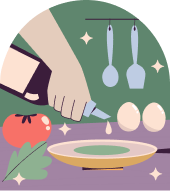
Flexible Learning
Study at your own pace, anytime, anywhere. Our online platform offers 24/7 access to lessons, so you can fit cooking into your busy schedule.

Hands-On Recipes
Practice with real recipes designed for all skill levels. From classic dishes to modern creations, you’ll master meals that impress every time.
What Our
Students Say
Hear from our happy students who have transformed their cooking skills with our courses. From beginners to seasoned cooks, our community loves sharing their success stories!
"This course completely changed how I cook! The instructors are so knowledgeable, and the lessons are easy to follow. I’m now confident making dishes I never thought I could."
Emma Johnson
"I love the flexibility of these courses. I can learn at my own pace and still feel supported. The recipes are amazing, and I’ve impressed my family with new dishes!"
Michael Chen
"The vegan cooking course was a game-changer for me. I learned so many creative ways to make plant-based meals that taste incredible. Highly recommend!"
Sophie Martinez
"The hands-on approach made learning so fun! I went from burning toast to baking artisan bread in weeks. Thank you for such an inspiring experience!"
James Carter
Discover Our Newest Culinary Courses
Get inspired by our latest additions! These exciting courses bring fresh ideas and techniques to your kitchen, perfect for food lovers eager to try something new. Browse our carousel to find your next culinary adventure.
Mastering Chocolate Cakes
4 Lessons
1.4 hour
Intermediate
What you'll learn
Ingredient Essentials
Understanding Dutch-process vs. natural cocoa
Choosing between all-purpose, cake, and bread flour
Role of oil vs. butter for moisture
Batter Techniques
Creaming method for light layers
One-bowl “melted-chocolate” method for dense cakes
Whipping egg whites for chiffon-style chocolate cake
Baking & Structure
Oven temperature calibration and its impact on rise
Tips for level cakes: pan prep, baking strips, and testing doneness
Troubleshooting: sunken centers, gummy crumbs, uneven tops
Fillings & Frostings
Crafting silky chocolate ganache (TABLE BELOW)
Whipped chocolate buttercream vs. Swiss meringue buttercream
Simple whipped cream and mousse fillings
Decoration & Assembly
Stack and level layers with a cake comb and turntable
Smooth crumb coat, final coat, and ganache drip techniques
Simple piping (star tips) and fresh-fruit accents
Frosting Type Key Ingredients Best Use Case
Chocolate Ganache Equal parts dark chocolate & cream Drip cakes, glossy finishes
Swiss Meringue Buttercream Egg whites, sugar, butter, cocoa Stable layer cakes, rosettes
Whipped Chocolate Buttercream Butter, cocoa powder, powdered sugar, milk Light filling, quick spreads
Vegan & Gluten-Free Cake Innovations
3 Lessons
1.5 hour
Intermediate
What you'll learn
Flour Blends & Ratios: How to create balanced gluten-free flour mixes (almond, oat, rice, sorghum) and adjust for different cake styles (sponges, pound cakes, chiffon).
Binder Techniques: Use flaxseed meal, chia gel, and aquafaba as egg replacers to provide lift and cohesion; troubleshoot sticky or crumbly batters.
Moisture Control: Incorporate nondairy milks (almond, oat, coconut), fruit purées, and oil ratios to maintain tenderness without a gummy crumb.
Sweetener Alternatives: Work with maple syrup, coconut sugar, and date paste; understand how liquid versus granulated sweeteners affect texture and browning.
Flavor Innovations: Develop unique cake profiles—matcha-coconut layer, cacao-beet marble, citrus-herb infusion—using natural colorants and extracts.
Frosting & Filling Adaptations: Prepare stabilized coconut whipped cream, aquafaba meringue buttercream, and avocado-chocolate ganache; learn to pipe and decorate without dairy.
Baking Adjustments: Modify oven temperatures, bake times, and pan preparations for even rise and minimal collapse in vegan/gluten-free batters.
Troubleshooting: Identify and fix issues like dense crumb, dryness, or collapse; use gentle folding, resting times, and moisture tests to ensure success.
Layer Cake Construction & Filling Strategies
3 Lessons
58 minutes
Intermediate
What you'll learn
Baking for Uniform Layers: How to prep pans (lining, spray), adjust batter distribution, and use baking strips or temperature hacks for flat, even cake tops.
Leveling & Stacking: Knife vs. cake leveler methods; applying a thin “crumb coat” of frosting; inserting dowels or straws for multi-tier support; stacking layers without slippage.
Filling Varieties & Textures: Selecting between custards, curds, fruit compotes, ganaches, buttercreams, and mousse fillings—considering sweetness, moisture control, and pairings (e.g., raspberry curd with chocolate cake).
Preventing Leaks & Weeping: Techniques for sealing cake layers (buttercream dam, chocolate collar), ensuring fillings stay contained; chilling strategies to set fillings before final coating.
Flavor Harmony & Balance: Matching cake flavor (vanilla, chocolate, spice) with filling profiles (tart, sweet, creamy) to avoid one element overpowering another; adjusting sweetness levels.
Finishing & Presentation Prep: Applying a smooth final coat of frosting or ganache; creating optional decorative borders or piped accents; slicing tips for clean, even servings.
Buttercream Icing Techniques
5 Lessons
59 minutes
Intermediate
What you'll learn
Buttercream Foundations: Basic ratios for American, Swiss, Italian, and French buttercreams; key differences in texture, sweetness, and stability.
Temperature Control: How to handle ingredients (room-temperature vs. chilled butter, sugar syrup stages) to prevent graininess or separation.
Flavoring & Infusing: Incorporating extracts, fruit purées, ganache, or cocoa; balancing sweetness and fat without compromising consistency.
Coloring Strategies: Best practices for gel vs. powdered colors; preventing “bleeding” or streaking when blending multiple hues (e.g., ombré or watercolor effects).
Spreading & Smoothing: Techniques for achieving glass-smooth sides (bench scraper, icing turntable, hot spatula method) and avoiding common marks or air pockets.
Piping & Decorative Textures: Creating rosettes, ruffles, ruffles, basketweave, petals, and multi-tone piping (hidden two-tone tips, reversible bags).
Stabilizing for Warm Climates: Adjusting recipes (adding meringue powder or corn syrup) so buttercream holds shape in humid or warm environments.
Troubleshooting Common Issues: Fixing grainy buttercream, curdled mixtures, overly soft or too-stiff icing; rescue methods (re-creaming, adjusting sugar syrup).
Wagyu A5 Steak with Baby Potato Aioli and Demi-Glace
4 Lessons
2.3 hours
Intermediate
What you'll learn
Techniques for cooking A5 Wagyu to ideal doneness (medium-rare to rare)
How to prepare a silky baby potato aioli using sous-vide or stovetop methods
Steps to make a proper French-style demi-glace, including mirepoix sauté and red wine reduction
Plate composition strategies to showcase the steak’s marbling alongside colorful accents
Timing coordination for serving hot steak with freshly made sauces
Espresso Martini
7 Lessons
2.5 hours
Intermediate
What you'll learn
Historical Background: Trace the origins of the Espresso Martini and understand its cultural impact in the mid-1980s London bar scene.
Ingredient Selection: Identify the ideal vodka and coffee liqueur varieties, plus quality indicators for fresh espresso beans.
Espresso Extraction: Master key variables—pressure, temperature, and timing—to pull a shot optimized for a cocktail.
Mixology Techniques: Learn dry-shaking and ice-shaking methods to achieve a rich, stable crema and a perfectly chilled drink.
Straining & Presentation: Discover how to double-strain for a crystal-clear pour, layer foam properly, and place garnishes without collapsing the crema.
Serving & Pairing: Explore glassware choices, serving temperatures, and ideal food pairings for various occasions.
Art of Fondant & Modeling Chocolate
4 Lessons
1.2 hour
Intermediate
What you'll learn
Fondant Fundamentals: How to knead, roll, and cover a cake in smooth fondant; troubleshooting common issues like tearing or cracking.
Color Mixing & Painting: Methods for achieving uniform pastel or vibrant hues using gel, powder, and airbrush techniques; blending shades for gradients and ombré effects.
Modeling Chocolate Preparation: Step-by-step process to make stable, pliable modeling chocolate at home—adjusting ratios for firmness or flexibility.
Sculpting Techniques: Building 3D elements (flowers, animals, figurines) layer by layer; using armature supports for larger models.
Texture & Embellishment: Creating realistic surface details—wood grain, lace patterns, ruffles, and draping—using molds, veiners, embossing tools, and impression mats.
Piping & Detailing: Accenting fondant and modeling chocolate pieces with royal icing, edible beads, and dusting powders to add dimension and realism.
Assembly & Structural Integrity: Best practices for attaching heavy sugar components to cake tiers; internal support systems (dowels, skewers) to ensure stability during transport and display.
Seared Foie Gras with Caramelized Pear Compote
2 Lessons
1.2 hour
Intermediate
What you'll learn
How to select and prepare high-quality foie gras, ensuring optimal texture and flavor.
Proper pan-searing techniques to achieve a golden-brown crust without overcooking the interior.
Step-by-step method for making silky caramelized pear compote infused with brown sugar, white wine, and warming spices.
How to balance the fatty richness of foie gras with sweet-tart fruit compote for a perfect flavor pairing.
Foie Gras–Topped Mini Slider
3 Lessons
1.3 hour
Intermediate
What you'll learn
Patty Composition: Balancing fat ratio and seasoning for ultra-tender mini burgers
Brioche Bun Technique: Butter-basting and gentle toasting for optimal texture
Foie Gras Preparation: Searing foie gras medallions to achieve a crisp exterior and silky interior
Gastrique Creation: Red wine-and-shallot reduction with a touch of vinegar for sweet-tart balance
Assembly & Presentation: Layering components for structural integrity and visual allure
Flavor Pairings: Complementary garnishes such as microgreens, fleur de sel, and truffle oil
Caprese Salad
6 Lessons
2.3 hours
Intermediate
What you'll learn
How to select perfectly ripe tomatoes and fresh mozzarella
Techniques for uniform slicing and layering
Balancing flavors with olive oil, balsamic vinegar, salt, and pepper
Creative garnishes and presentation ideas
Tips for make-ahead prep without sacrificing freshness

